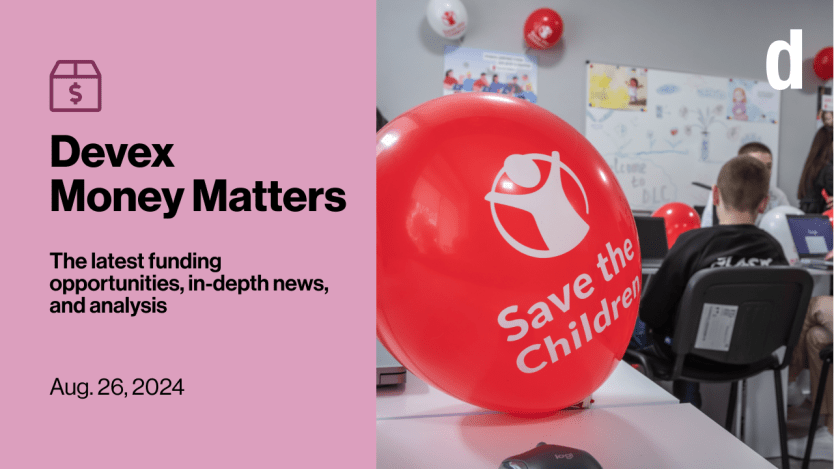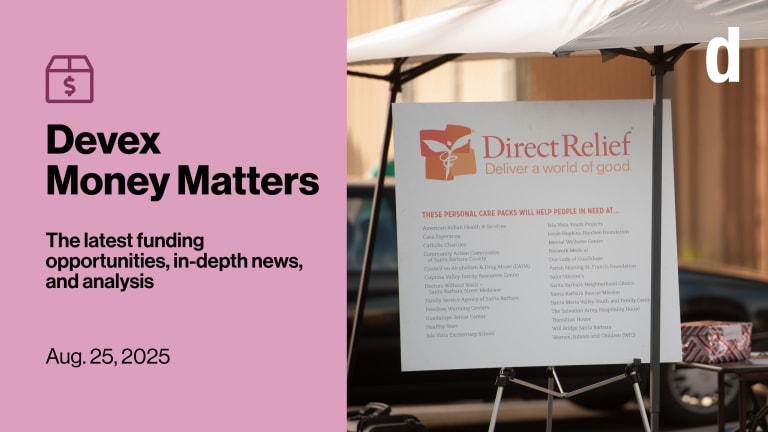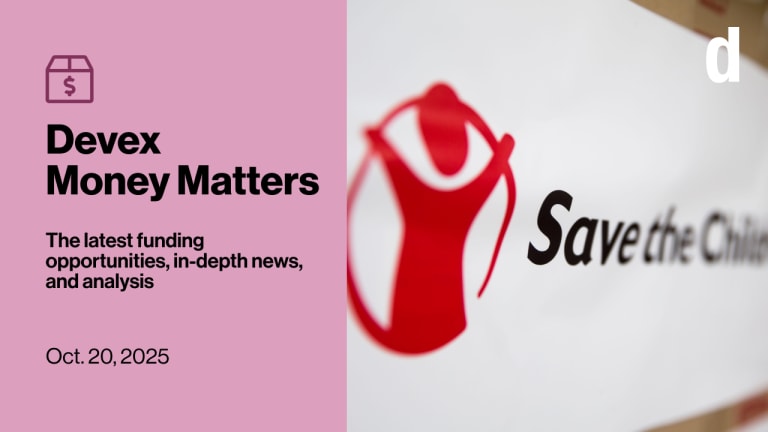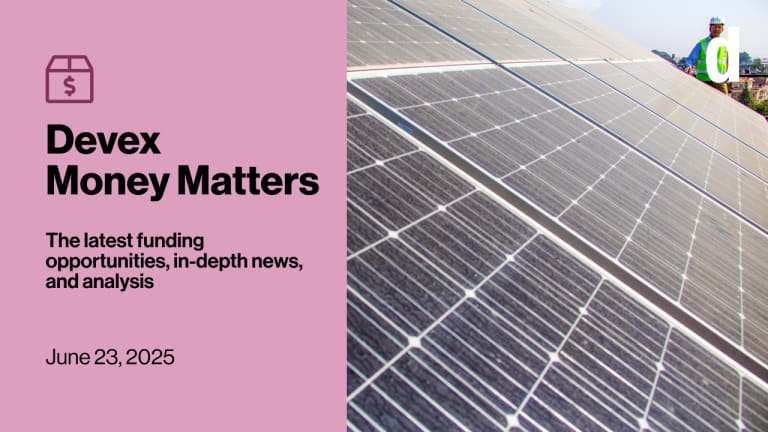
Recently, we published a special report on the largest international NGOs in the United States. Now, as a companion piece, we bring you the same analysis for the United Kingdom. After a gloomy few years for British aid, this might show some signs that things are turning the corner.
+ Are there topics you want to read more about in Money Matters? We want your feedback.
INGOs grow
There are currently 27 international NGOs in the United Kingdom with a turnover of more than £50 million (around $66 million), according to the most recent documents filed with national regulator, the Charity Commission. Cumulatively, their income rose more than 8% last year — which is an encouraging sign for a sector that’s had tough times recently.
This is a preview of Devex Money Matters
Sign up to this weekly newsletter and get the latest in development funding in your inbox every Monday.
A lot of that, admittedly, is down to an increase of more than £250 million in income for Save the Children International, by far the largest organization headquartered in the U.K. And things aren’t rosy there, with hundreds of jobs at risk and staff in rebellious mood — see below for more.
But other organizations also saw increases, too. My colleague Miguel Antonio Tamonan has brought you an in-depth analysis of the whole list.
Read: The largest UK development charities — and where they get their income (Pro)
+ Your Devex Pro membership lets you get the most out of our coverage of the U.K. aid sector. Not yet a Pro member? Access all our exclusive reporting and analyses, special funding reports, invite-only events, and more by starting your 15-day free trial today.
Funding activity
We publish tenders, grants, and other funding announcements on our Funding Platform. Here are some of the ones viewed the most in the past 10 days.
• Danish funder Danida is seeking consultancy services to gather primary field data through case studies to increase understanding of mixed migration in the Middle East.
• The European Union funding agency DG-INTPA is seeking proposals to support the livelihoods of local communities linked to the preservation and promotion of cultural heritage, particularly for women, youth, and vulnerable groups in Jordan.
• The European Bank for Reconstruction and Development has approved funding to support sustainable investments and the promotion of green technologies among local small and medium-sized enterprises in Armenia.
• Global Affairs Canada has approved funding to empower women to conserve highland, wetland, and peatland ecosystems for increased climate resilience in Peru, Bolivia, and Ecuador.
• The Secretariat of the Pacific Regional Environment Programme is requesting services to review and update the current set of regional environmental indicators for Pacific island countries to better align with national priorities and relevant regional and global frameworks on biodiversity, climate change, and pollution/waste.
+ Try out Devex Pro Funding today with a free five-day trial, and explore funding opportunities from over 850 sources in addition to our analysis and news content.
Yes we Kam?
Last week, Kamala Harris accepted the Democratic nomination for the presidency with enormous fanfare. The bookies — always the best predictors of election results — now have her as the favorite to reach the White House.
But so far her approach has been light on policy specifics, meaning that we haven’t heard too much about what her approach would be to development funding. My colleague Elissa Miolene went looking for answers.
Read: Where is Kamala Harris on US foreign aid? (Pro)
+ Your Pro membership gives you access to all of our exclusive coverage on U.S. aid — including an “ask me anything” session with USAID acquisition and assistance expert Chuck Pope happening tomorrow. Save your spot now.
Save Save
Save the Children International is in the middle of a tumultuous round of redundancies that has put more than a quarter of jobs at risk in its central and regional offices. Staff there tell me that morale is as low as it has ever been.
Staff have circulated a letter, inviting their colleagues to sign, which says they have lost trust in leadership and are calling for a series of reforms. At the time I wrote about it last week, more than 200 staff had signed, and it’s now over 300.
Save the Children has said the redundancies are down to a mixture of financial pressures and desire to shift resources from the center to country offices, but this is being viewed with widespread skepticism by both central and country office workers.
Having said that, the financial pressures are real enough, after humanitarian funding dropped sharply in 2023 and is on course to fall again in 2024. The International Rescue Committee has also had to make layoffs, and there are rumors of pressure at other organizations.
Read: More than 200 Save the Children staff 'have lost trust' in leadership
ICYMI: IRC poised to shed 1 in 9 UK staff amid funding crisis
Bred for change
The European Bank for Reconstruction and Development is a steadily growing force in development funding, and its pipeline of projects grew again to a new high point in 2023.
Unsurprisingly, most of its projects are in Europe and nearby countries. But which countries and sectors got the most cash? My colleague Alecsondra Kieren Si has the lowdown.
Read: Inside EBRD's €14.9B pipeline in 2023 (Pro)
Sign up to Money Matters for an inside look at the biggest stories in development funding.








